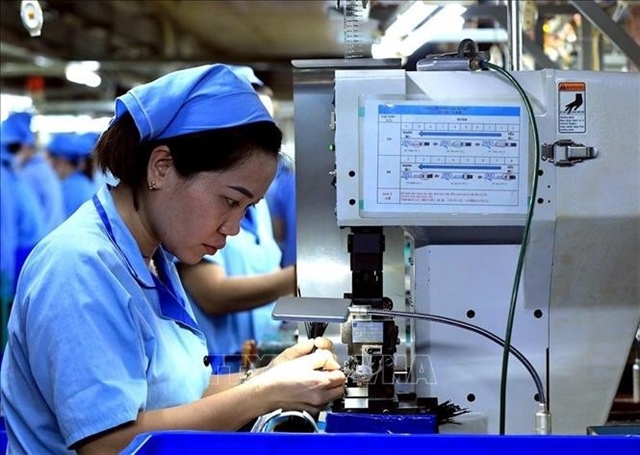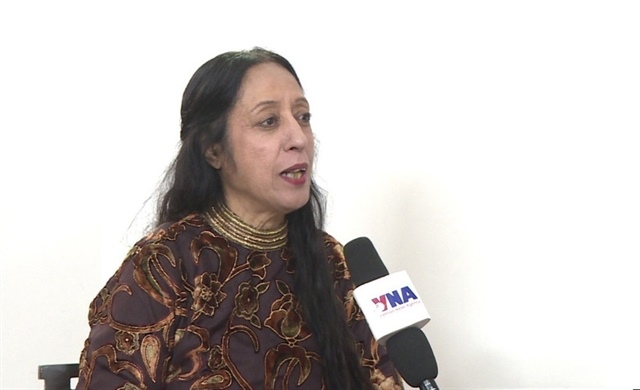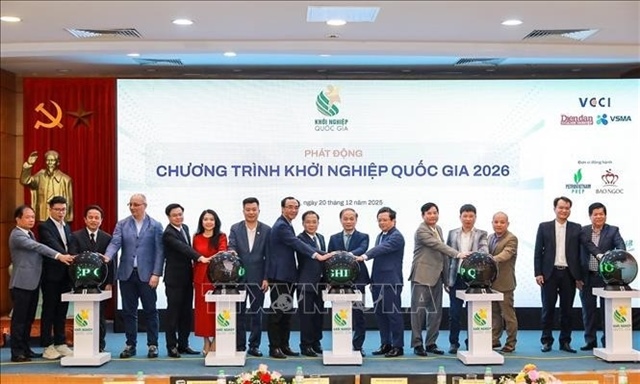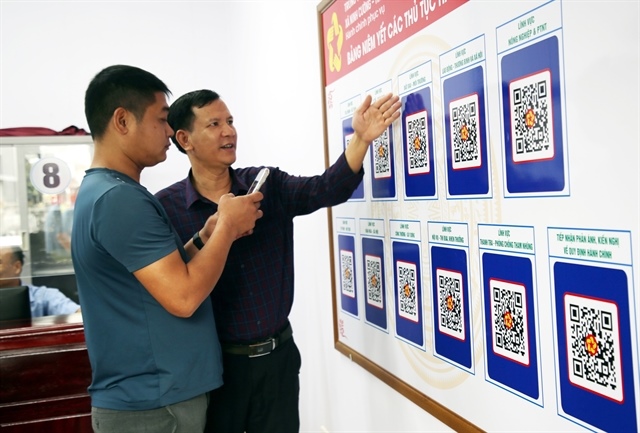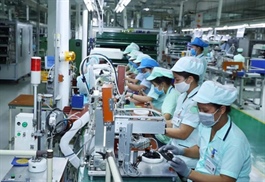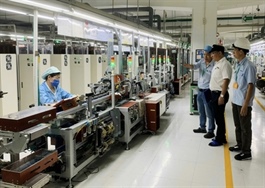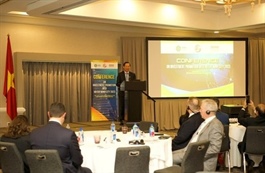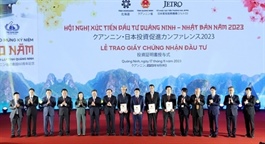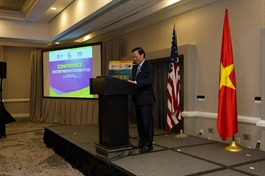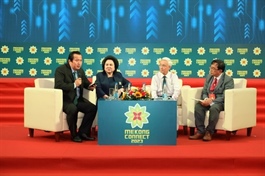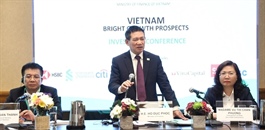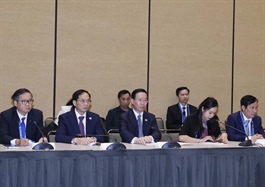Hải Phòng seeks trade cooperation with India
Hải Phòng seeks trade cooperation with India
There remained potential and opportunities for stronger cooperation between Việt Nam, particularly the northern port city of Hải Phòng, and India.
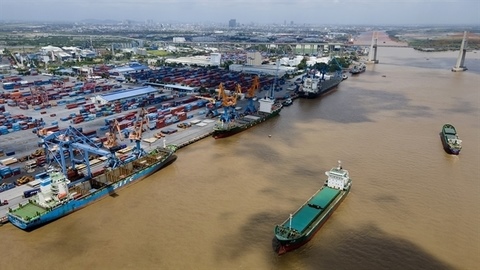
A view of Hải Phòng Port in Hải Phòng City. — VNA/VNS Photo |
Đỗ Quốc Hưng, Deputy Director of the Asia-Africa Market Department under the Ministry of Industry and Trade, delivered this statement at a conference in New Delhi late last week.
He called on Indian businessmen to come and make investments in Hải Phòng and affirmed that the city would be an attractive investment and business destination for these firms.
The event, which aimed to promote business opportunities and connection between Hải Phòng City and Indian partners, was held in both face-to-face and online formats as part of the Red River Delta-Hải Phòng Industry and Trade Fair hosted by the municipal People’s Committee.
It saw the participation of representatives from 100 businesses from India and Hải Phòng City.
Vice Director of the municipal Department of Industry and Trade Nguyễn Công Hân said the ASEAN-India Free Trade Agreement, which officially took effect in 2010, has helped boost trade relations between Việt Nam and India, and between Hải Phòng and India as well.
However, the trade turnover between Hải Phòng and India remained modest. Two-way trade reached over US$202.5 million in 2022, down 3.72 percent compared to 2021.
However, the figure saw a slight increase of 6 percent to $160.86 million in the first 10 months of 2023. Of which, export turnover reached $57.59 million, down 1.25 percent over the same period last year while import turnover saw a yearly rise of 12 percent to $103.27 million.
Some items with large export turnover included electronic components, accounting for 23 percent of the total turnover; car door latches (19 percent); machinery and mechanical equipment (16 percent); copper and copper products (12 percent).
Other staples with significant import value were meat products, making up 8 percent of the total turnover; nuts and seeds (16 percent); natural stone-made products (16 percent) and frozen squid (9 percent).
With its advantages in terms of seaports, manufacturing, textiles, footwear, and aquaculture, Hải Phòng's industries would satisfy the demand and preferences of the Indian market, he said, adding that the event was expected to further boost trade connections between Hải Phòng and Indian firms, contributing to promoting bilateral export-import activities.
For his part, Chairman of the Indo-Vietnamese Chamber of Commerce & Industry in Hà Nội, Indronil Senguta, praised the business and investment environment in Việt Nam, saying that the Southeast Asian country had effectively leveraged the global trend of production chain diversification by major corporations in the world.
Numerous Indian investors were very interested in the Vietnamese market, especially in provinces and cities with convenient connectivity and transport like Hải Phòng, which was considered Việt Nam's northern gateway, he said.
Hải Phòng is one of the most important economic hubs in Việt Nam, ranking third among the largest contributors to the national budget.
It is also the largest import-export centre in the North, having trading relations with more than 40 countries and territories around the world.
By September 30, 2023, the port city had attracted over 1,000 foreign-invested projects worth nearly $28 billion. The city lured over $3 billion worth of foreign investment over the past nine months of this year.


